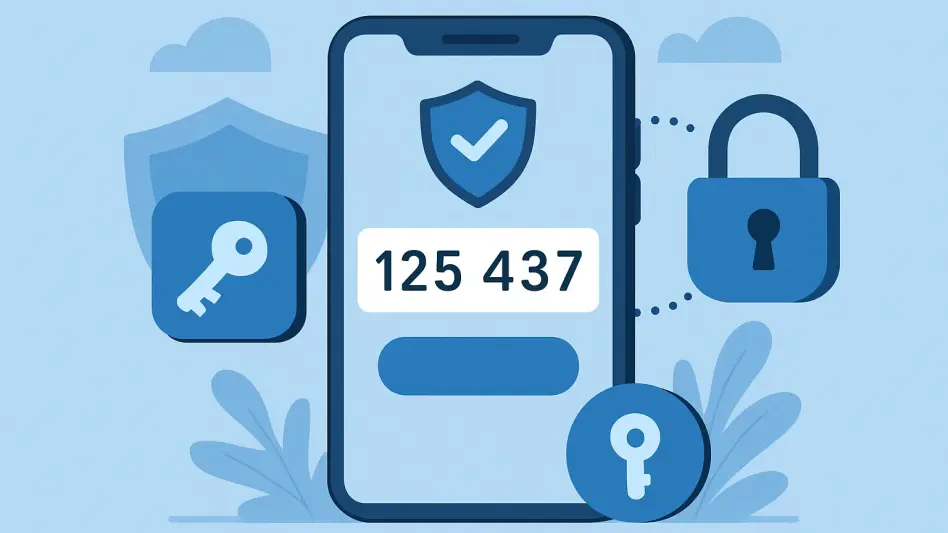In an era where digital security breaches are becoming alarmingly common, the quest for a safer and more user-friendly authentication method has never been more critical, especially as cyberattacks grow in sophistication and frequency, threatening individuals and businesses alike. Traditional passwords, long the cornerstone of online protection, have revealed glaring weaknesses—too often, users opt for simplicity over safety, reusing the same weak credentials across multiple platforms, leaving their accounts ripe for exploitation. This vulnerability has fueled a surge in data breaches, costing individuals and businesses billions annually in damages and lost trust. Enter passkeys, a revolutionary technology poised to redefine how digital identities are safeguarded. By eliminating the need for memorized passwords and leveraging advanced cryptographic methods, passkeys offer a tantalizing promise: security that doesn’t sacrifice convenience. This cutting-edge approach could mark the end of an era plagued by forgotten logins and phishing scams, paving the way for a smoother, safer online experience. As the tech world buzzes with anticipation, it’s time to explore what makes passkeys a potential game-changer in the realm of authentication, delving into their mechanics, benefits, and the challenges that lie ahead in their widespread adoption.
Unpacking the Mechanics of Passkeys
Passkeys represent a bold departure from the outdated password system, introducing a method of authentication that prioritizes both security and ease. Unlike traditional passwords, which depend on users remembering and typing out complex strings of characters, passkeys operate on the principles of public key cryptography. A public key is securely stored by the service provider, while a private key remains locked on the user’s personal device—whether that’s a smartphone, tablet, or laptop. Authentication occurs not through manual input but via biometric methods such as facial recognition or fingerprint scanning, or even a simple PIN. This design eliminates the burden of memorization and reduces the risk of human error, offering a seamless way to access accounts. As a result, passkeys transform the login process into something intuitive, aligning with the natural ways users already interact with their devices daily, while embedding a robust layer of protection against unauthorized access.
The distinction between passkeys and passwords extends beyond mere functionality to fundamentally alter the user experience. With passwords, the pitfalls are well-known: forgotten combinations, the temptation to reuse credentials, or the hassle of periodic resets. Passkeys sidestep these issues entirely by being intrinsically tied to a specific device and requiring physical proximity for activation. This means that even if a malicious actor gains knowledge of an account, they cannot log in without the associated device in hand. Such a setup not only curbs common threats like brute-force attacks but also minimizes the frustration tied to password management. For many, this shift could redefine how digital security feels—less like a chore and more like a natural extension of using technology, setting a new standard for what authentication should be in a connected world.
Security Advantages That Redefine Protection
One of the most compelling aspects of passkeys lies in their unparalleled defense against prevalent cyber threats, addressing vulnerabilities that have long plagued traditional authentication. Phishing attacks, a notorious tactic where users are tricked into entering credentials on fraudulent sites, are rendered ineffective with passkeys. This technology ensures that authentication only activates on the legitimate domain of a service, meaning fake websites cannot deceive users into compromising their accounts. Furthermore, the necessity for physical proximity to the device holding the private key adds a formidable barrier against remote hacking attempts. Unlike passwords that can be guessed or stolen from afar, passkeys demand a tangible connection, drastically reducing the likelihood of unauthorized access and offering a level of security that feels almost impenetrable in today’s threat landscape.
Beyond neutralizing phishing, passkeys also surpass the limitations of two-factor authentication (2FA) methods that have become standard in recent years. While 2FA, particularly SMS-based codes, provides an additional layer of security over passwords alone, it remains susceptible to interception through tactics like SIM swapping or social engineering. Passkeys, by contrast, cannot be shared or duplicated, rendering such exploits futile. They are typically stored in highly secure environments, such as Apple’s iCloud Keychain or reputable cross-platform password managers, ensuring that credentials stay out of reach from prying eyes. This makes passkeys not just a step but a significant leap forward in fortifying digital accounts, providing a shield that adapts to the evolving nature of cybercrime and offers users a reliable defense against even the most cunning attacks.
Convenience as a Core Feature of Passkeys
A defining strength of passkeys is their ability to simplify the authentication process, making logins a frictionless part of daily digital interactions. Once configured, accessing accounts becomes as effortless as unlocking a smartphone—whether through a quick biometric scan or a brief PIN entry. This eliminates the need for cumbersome password resets or the risky habit of jotting down credentials on paper. Moreover, passkeys can be synchronized across multiple devices using services like iCloud Keychain for Apple users or cross-platform solutions like Bitwarden for broader compatibility. This syncing ensures that whether on a phone at home or a laptop at work, users can authenticate without missing a beat. Even when using a device that doesn’t store the passkey directly, options like scanning a QR code with a trusted gadget enable remote access, showcasing how this technology prioritizes accessibility without cutting corners on safety.
The balance passkeys strike between ease and protection is transformative for those overwhelmed by the demands of modern digital life. Managing dozens of unique passwords across various platforms often leads to frustration, prompting shortcuts that undermine security. Passkeys erase this dilemma by embedding authentication into the natural flow of device use, requiring no extra mental load or additional steps beyond what users already do. This integration means that security becomes invisible yet ever-present, a stark contrast to the constant vigilance passwords demand. For anyone seeking a respite from the chaos of credential management, passkeys offer a refreshing alternative that doesn’t just protect accounts but also preserves peace of mind, redefining the relationship between users and their digital tools.
Challenges on the Path to Widespread Adoption
Despite their impressive benefits, passkeys come with hurdles that could temper their immediate uptake across diverse user groups. A significant concern is the risk of losing access to accounts if the device storing the passkey is lost, stolen, or damaged. While some platforms provide recovery mechanisms—such as backup authentication methods or security questions—others may lack such safeguards, potentially locking users out permanently. Additionally, the inability to export passkeys to different services or ecosystems poses a challenge during transitions, such as switching from one device manufacturer to another. This rigidity means users must strategically decide where to create and store their passkeys, often favoring platforms they use most frequently to minimize disruption. Such limitations highlight that while passkeys are innovative, they require careful planning to avoid unintended consequences.
Adoption of passkeys also raises questions about suitability for all demographics, particularly those less comfortable with technology. For individuals deeply embedded in a single ecosystem—think Apple or Google—the transition might feel intuitive, with seamless syncing and familiar interfaces easing the shift. However, for users juggling devices from multiple manufacturers or those unfamiliar with digital tools, the complexities of cross-platform compatibility and recovery processes can be daunting. The current state of passkey implementation may not fully accommodate the needs of less tech-savvy individuals, suggesting that broader education and standardization are necessary. Until these barriers are addressed, the full potential of passkeys might remain out of reach for some, underscoring the need for ongoing refinement to ensure inclusivity in this new era of authentication.
Looking Ahead to a Password-Free Horizon
Reflecting on the journey of digital security, passkeys have emerged as a beacon of hope, tackling the persistent flaws of traditional passwords with a blend of innovation and practicality. Their use of public key cryptography, coupled with biometric or PIN-based access, has redefined what it means to log in securely, rendering phishing attempts and remote hacks largely obsolete. The convenience of syncing across devices and authenticating remotely has further cemented their appeal, even as challenges like device dependency and non-exportability linger as points of concern. Yet, these early hurdles have not diminished the transformative impact passkeys promise for safeguarding online identities.
Moving forward, the focus should center on bridging the gaps that have surfaced during initial adoption phases. Tech companies and service providers are encouraged to prioritize robust recovery options and enhance cross-platform compatibility to prevent user lockouts and ease transitions. Simultaneously, educational initiatives could play a pivotal role in demystifying passkeys for less tech-savvy populations, ensuring that this technology becomes accessible to all. As standardization efforts progress over the coming years, potentially from now through 2027, the vision of a password-free world could solidify, turning passkeys into the universal standard for authentication. This evolution would not only strengthen digital defenses but also redefine user expectations, making security a seamless part of the online experience.








